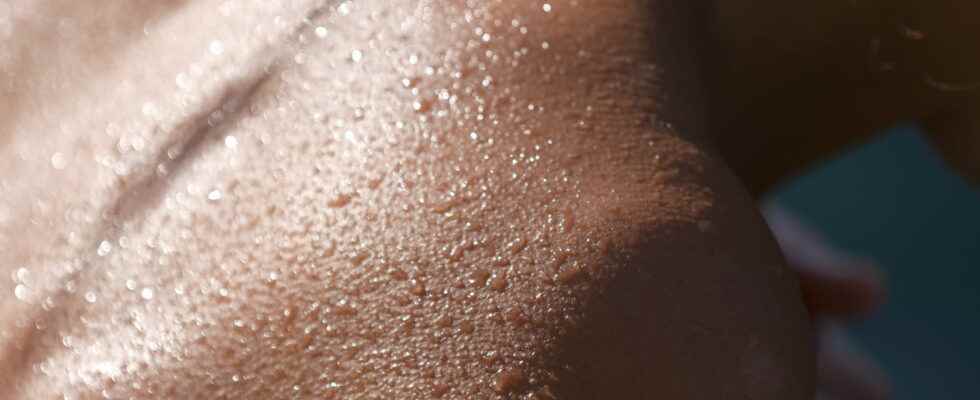If the allergy to sweat does not exist, certain pathologies linked to perspiration can have effects on the skin. Explanations with Dr. Louva Rakotonarivo, dermatologist.
What are the signs of sweat allergy?
Sweat allergy – strictly speaking – does not exist. “Behind this term allergy, there are actually several pathologies“, explains Dr. Louva Rakotonarivo. Among her, eczema exacerbated after perspiration, which particularly affects children with atopic skin. “There is also the sweat miliary, where the sweat is trapped under the skin after sudden exposure to heat but also cholinergic urticariaa form ofhives caused by an increase in temperature body related to effort, an emotion, a fever, a confined atmosphere or an excessively hot bath, for example“, lists the specialist. To this is added aquagenic urticaria or water allergy. “The person reacts to contact with the water in his environment but also to his own sweat “says Dr. Sweat can also carry some medications or degradation products of drugs: it is then these molecules that are responsible for allergic manifestations.
What causes a sweat allergy? A sickness ?
► Atopic eczema favored by sweat occurs during the summer. “It is located on the trunk and in the folds of flexion where very itchy little red pimples and patches appear.“, specifies the dermatologist.
► The sweat miliaryof which there are 3 forms – crystalline, deep, red or “muddled” – is characterized by small translucent to red lesions, not always symptomatic, healing after desquamation.
► Cholinergic urticaria appears as very small lesions. “These lesions are raised and very itchy. They are disseminated on the body and are sometimes accompanied by headaches and/or stomachaches“, details the specialist.
► Aquagenic urticaria – meanwhile – is characterized by “itchy raised fleeting red patches” on areas that have been in contact with water and/or folds in the case of a reaction to sweat. Excess sweat in the folds and feet can lead to “maceration of the superficial layers of the skinpromoting the proliferation of microbes, bacteria and fungi“.
► Fungal infections are manifested by red patches with scales on their periphery. “Nails can also be overgrown“, specifies the Dr before adding that “bacterial overgrowth may appear as buff to bright red patches depending on the type of bacteria involved“.
Who to consult?
The dermatologist recommends talking about it with your pharmacist, Firstly. “He is a good interlocutor. He will be able to deliver a first treatment“. It is also possible to turn to his attending physician or dermatologist.
How to treat a sweat allergy?
Heat-related dermatoses improve once the body has cooled. According to the dermatologist, “crises are prevented by the eviction of triggering factors“. Hives are treated by antihistamines. “The miliaries are of spontaneous resolution. Antiseptics associated with antibiotics and antifungals help control microbial growth“, adds the specialist.
Thanks to Dr. Louva Rakotonarivo, dermatologist.
